Padang
Padang: Center of Mingangkabau Culture
Location: Padang is the capital of West Sumatra and is situated on the shore of the Indian Ocean.
Date Visited: July 2022
Getting There
Padang is easily accessible from Jakarta, and most other large Indonesian cities, via commercial air flights. If you happen to be in Malaysia, you can also reach Padang from Kuala Lumpur.
Minangkabau Culture
West Sumatra is the epicenter of the Minangkabau. One of the most distinctive features of this culture is its architecture, featuring dramatic and steep curved roof structures. You will get your first glance of this style when you arrive at Padang Airport and notice its distinctive curved roof as your plane pulls into the gate. My favorite example of Minangkabau architecture is the stunning Grand Mosque of West Sumatra. This contemporary take on traditional Minangkabau design was completed in 2014 and is one of the largest mosques in Indonesia. The attached photos will give you a better sense of this structure than any text—it’s a must visit. Also attached is a photo of a large Minangkabau residence to serve as a point of comparison.
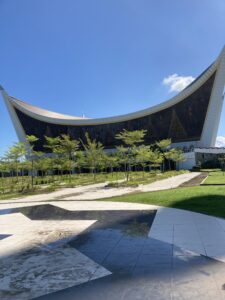
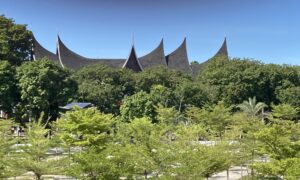
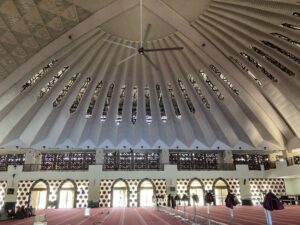
Nasi Padang
Another important aspect of Minangkabau culture is its cuisine, with Nasi Padang being the quintessential example. Nasi Padang is a mini banquet of dishes (vegetables, meat, and fish) served with sambal (spice paste) and rice. It’s become so popular that you can find Nasi Padang restaurants all over Southeast Asia—Jakarta, for example, has dozens and dozens of Nasi Padang establishments spread throughout the city. Most of these dishes are spicy and often smothered in piquant sauces. My favorite component of a Nasi Padang is Beef Rendang, an aromatic and fiery stewed dish, which delightfully scorches the palate.
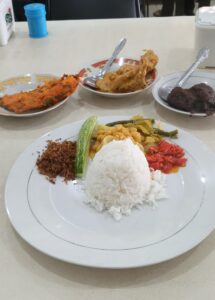
Of course, I had to visit a Nasi Padang restaurant while in this cuisine’s namesake city. As you can see, I had a very small-sized banquet, because I was dining alone. The best Nasi Padang is served to a group of six or eight people, then you can sample 15 or more dishes and have a fully authentic experience. Even if you can’t make it to Padang, but you happen to be in Indonesia, I would recommend seeking out a local Nasi Padang restaurant wherever you are, as it truly is one of the classic examples of Indonesian cuisine. (If you are from Kyrgyzstan, or some other spice-averse country, be careful because Nasi Padang might be much hotter than what you’re used to.)
Padang Beach

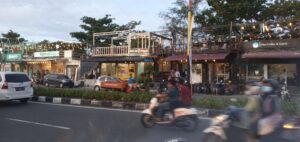
I was fortunate that my hotel was a short stroll from Padang Beach. There’s a stretch almost a mile long loaded with restaurants, street vendors, shops, and clubs. I was there on a Friday evening just before sunset and enjoyed wandering among the thousands of locals who were experiencing the beach and the pleasantly casual vibe.
